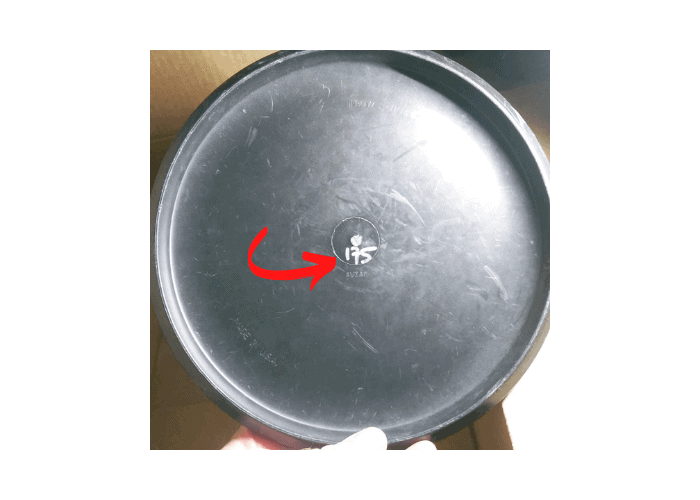Choosing the right weight for your disc golf discs is very important for playing your best game. Without guidance from others, it can be difficult to know when you should throw a certain weight and for what reason. Here are a few of the questions that I’ll be answering throughout the article.
- What are the differences between disc golf weights?
- What putter weight should I use?
- How do I know what my disc weighs?
Let’s go over the different disc golf weights and the differences between them!
Disc Golf Weight Guide
The first thing that we need to know is what is the legal disc golf weight.
Legal Disc Golf Weight – According to the PDGA Guidelines, a legal disc golf disc must not exceed a maximum weight of 200 grams.
Besides the legal weight, there are common weights that each type of disc will be. For putters, mid-ranges, and drivers, the majority of discs will fall between 165-175 grams. Most disc golf brands offer a plastic material that’s lightweight and easy for newer players to throw.
Disc Golf Putter Weight
Since putters are usually used when you’re close to the basket, most people prefer to have a putter that’s on the heavier side. It’s common to see players using a max-weight putter which would be 175 grams. Newer players may prefer a disc in the 170-172 gram range since it can be thrown farther, but it is more sensitive to windy conditions.
For throwing putters, I would go with one that comes in around 172 grams to get the best control and distance possible.
Weight classes for putters:
- 150 grams
- 151-164 grams
- 165-169 grams
- 170-172 grams
- 173-175 grams
Disc Golf Mid-Range Weight
For mid-range discs, the optimal range of weight is between 151-169 grams. The more experienced players will often throw a heavy mid, between 178-180 grams. There’s also a good selection of mid-ranges that are metal flake discs, to increase the weight and stability while in the air.
Weight classes for mid-ranges:
- 150 grams
- 151-164 grams
- 165-169 grams
- 170-174 grams
- 175-177 grams
- 178-180 grams
Disc Golf Driver Weight
Most drivers are at least 165 grams because of their ability to be thrown accurately in most conditions on a course. Discs that are lighter than 165 grams might struggle with headwinds or tailwinds and won’t get the maximum distance that you’re aiming for.
If you’re mainly a sidearm player, these forehand discs should help you get an understanding of their capabilities. Most fairway drivers and distance drivers are designed with premium plastic that will keep the flight characteristics for longer.
Weight classes for drivers:
- 150 grams
- 151-164 grams
- 165-169 grams
- 170-174 grams
- 175-177 grams
- 178-180 grams
Best Weight For Beginners
The best weight for newer players is around 170 grams for putters, 160 grams for midranges, and 165 for fairway and distance drivers.
Most discs that are lightweight are easier for beginner disc golfers to control and throw for more distance since they don’t require a ton of arm speed. The only time this isn’t true is if you’ll be throwing directly into the wind, in which case a heavier disc would be better.
How Does Disc Weight Affect Flight?
There’s a huge impact on the flight path when looking at different weighted discs. Heavier discs like most distance drivers are more stable and will perform better when thrown in the wind.
Lighter disc golf discs are more likely to turn over completely, and will usually get less distance when it’s windy.
Another benefit of using a heavy disc is that the chains will have an easier job catching it and keeping it in the disc golf basket. This is important when choosing your putter weight since we want the putter to be easily catchable in the chains regardless of the plastic type.
Do Heavier Discs Fly Farther?
With all conditions exactly the same, a heavier disc should have a longer flight path and gain more total distance. Lighter discs can occasionally be thrown further, especially if they’re being thrown into a tailwind.
Newer disc golfers should begin with lightweight discs so that they can generate enough spin and power to get more distance. With proper form and release, a heavier disc will have more control and in turn, can fly farther than the same disc at a lower weight.
Finding the Disc Weight
For most discs, the weight is located and written on the bottom of the disc.
Sometimes we have discs with no given weight or it’s been worn down from use and time. If that’s the case it can be slightly frustrating not knowing the weight of the disc you’re throwing.
I’ve had some luck asking local shops nearby for a weight measurement since they have a scale and can often help out. The other option is to buy a scale to use at home that can give you an accurate mass.
The link below is for a scale with accurate results that I’ve used before!
Difference Between Disc Golf Weights
The weight of the disc has a huge impact on its flight path and stability in windy conditions. A lighter disc can often be thrown farther especially for newer players, but it comes at the cost of stability and control.
Throwing max weight discs required more technical form and overall strength to shape your shot and control the disc. They are also more effective in the wind since the extra weight will make it less likely to turn over mid-flight.
Recommended Disc Weight
Finding and choosing the correct weight to throw can be overwhelming and leave a lot of people wondering, does it really matter?
But it’s important if you want to improve on your disc golf game, so to help limit those tough choices here’s a simplified table to help pick.
|
Age |
Disc Type |
Disc Weight |
|
7-9 |
Putters, Mid-ranges, Drivers |
< 150g |
|
10-14 |
Putters, Mid-ranges, Drivers |
150-160g |
|
15-18 |
Putters, Mid-ranges, Drivers |
160-175g |
|
18+ |
Putters, Mid-ranges, Drivers |
165-180g |
When Should You Throw a Lighter Disc?
Knowing when to throw a lighter disc from your bag comes by building experience while on the course. The main thing to look for is how windy a day is and will it have a major impact on the flight of the disc.
When to choose a lightweight disc:
- For new players
- If you need maximum glide
- On holes with minimal wind
- For flippy shots like rollers
- Throws that require less stability
When Should You Throw a Heavier Disc?
On the opposite side of the spectrum, we have the max-weight discs. Max weight discs are the perfect choice for windy days. The more weight the better the disc is at continuing its flight unaffected. With more mass on the disc, it will easily cut through the air and keep up a higher spin rate.
When to choose a heavy disc:
- During windy conditions
- If you have enough arm strength to reach max distance
- If you need more stability in your disc
- When you have enough control not to flip the disc
Final Thoughts – Disc Weight
The weight of the disc has a massive impact on how the disc flies and performs while in the air. All of the brands including Discraft, Innova, and Dynamic Discs have similar ranges of weight depending on the plastic.
A heavier disc can be controlled much easier but is harder for new players who don’t have as much arm speed. Most lightweight discs can be thrown just as far in the perfect conditions.


